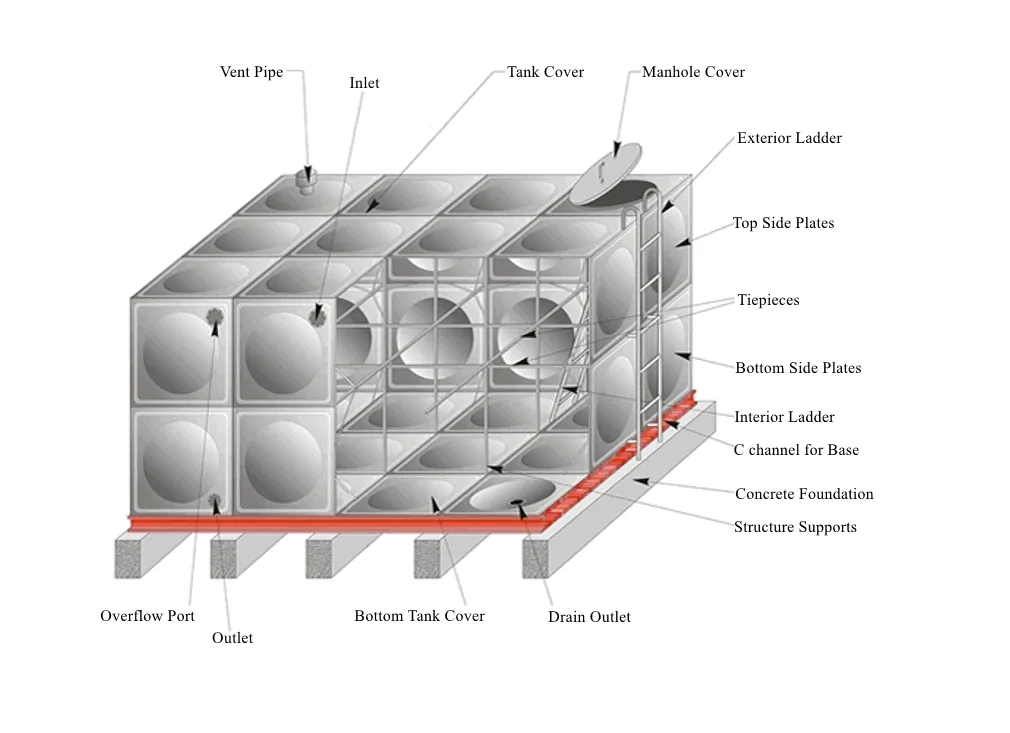loading...
- No. 9, Xingyuan South Street, Dongwaihuan Road, Zaoqiang County, Hengshui, Hebei, China
- admin@zjcomposites.com
- +86 15097380338
- Welcome to visit our website!
FRP Water Storage Solutions for Efficient Liquid Management Systems
FRP Water Storage Tanks A Comprehensive Overview
In today's world, the need for efficient and durable water storage solutions has become increasingly important. One of the most reliable options available in the market is the Fiberglass Reinforced Plastic (FRP) water storage tank. These tanks are designed to meet the demands of various industries, including municipal water supply, agriculture, and industrial applications. In this article, we will explore the advantages, construction, applications, and maintenance of FRP water storage tanks.
Advantages of FRP Water Storage Tanks
One of the primary benefits of FRP tanks is their remarkable strength-to-weight ratio. Unlike traditional materials such as steel or concrete, FRP tanks are lightweight yet incredibly strong. This characteristic makes them easier to transport and install, reducing both labor and transportation costs.
Another significant advantage of FRP tanks is their corrosion resistance. They are manufactured using a combination of fiberglass and resin, making them impervious to rust and other forms of chemical corrosion. This property is especially valuable in environments where water quality is crucial or in areas where the water may come into contact with aggressive substances.
In addition to their durability, FRP tanks are also thermally insulated, providing excellent protection against temperature fluctuations. This insulation helps in maintaining the quality of the stored water, an essential factor for both potable and non-potable water applications.
Construction of FRP Water Storage Tanks
FRP tanks are constructed using a process called filament winding or hand lay-up, which allows for precise control over the thickness and layering of fiberglass. The process begins with a core structure, often made of steel or a PVC frame, onto which multiple layers of fiberglass and resin are applied. The result is a robust tank that can withstand high pressures and temperatures.
The customization of FRP tanks is another critical aspect of their construction. They can be manufactured in various sizes, shapes, and configurations to meet specific requirements. This flexibility makes them suitable for a wide range of applications, from small residential setups to large-scale industrial storage.
frp water storage tank

Applications of FRP Water Storage Tanks
FRP water storage tanks are widely utilized across multiple sectors. In municipal applications, they provide a safe and reliable means of storing drinking water, ensuring compliance with health regulations. In agricultural settings, these tanks are used for irrigation systems, livestock watering, and chemical storage, contributing to overall farm efficiency.
The industrial sector also benefits from FRP tanks, where they serve as storage solutions for chemicals, wastewater, and other hazardous materials. Their corrosion resistance and structural integrity make them ideal for such applications, ensuring the safety of both the product and the environment.
Maintenance of FRP Water Storage Tanks
While FRP tanks are known for their durability, regular maintenance is still essential for optimal performance. Inspections should be conducted periodically to identify any signs of wear, damage, or leaks. Cleaning the interior to prevent biofilm buildup and ensuring that all fittings and connections are secure are also crucial steps in maintaining the integrity of the tank.
Additionally, proper installation plays a pivotal role in the longevity of FRP tanks. It's essential to position the tank on stable ground and use appropriate anchoring techniques to prevent movement or tipping.
Conclusion
In conclusion, FRP water storage tanks offer a modern solution to the growing demands of water storage. Their strength, corrosion resistance, and versatility make them an excellent choice for various applications. With proper maintenance and installation, FRP tanks can provide reliable service for many years, ensuring the safe storage of water and other liquids. As industries continue to evolve and face new challenges, FRP tanks stand out as a superior option in the quest for efficient and effective water storage solutions.
-
The Rise of FRP Profiles: Strong, Lightweight, and Built to LastNewsJul.14,2025
-
SMC Panel Tanks: A Modern Water Storage Solution for All EnvironmentsNewsJul.14,2025
-
GRP Grating: A Modern Solution for Safe and Durable Access SystemsNewsJul.14,2025
-
Galvanized Steel Water Tanks: Durable, Reliable, and Ready for UseNewsJul.14,2025
-
FRP Mini Mesh Grating: The Safer, Smarter Flooring SolutionNewsJul.14,2025
-
Exploring FRP Vessels: Durable Solutions for Modern Fluid HandlingNewsJul.14,2025
-
GRP Structures: The Future of Lightweight, High-Performance EngineeringNewsJun.20,2025
